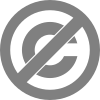User:WormTT/Adopt/Angelo Michael
Angelo Michael (talk · contribs)
[edit]Hi Angelo Michael, and welcome to your adoption center. I'll substitute across a lesson for you tomorrow, but for now I thought you'd like to know that you do now have your own official page. As you can see from User:Worm That Turned, I've created an adoption HQ, where you can read ahead in the lessons. I haven't finished them all as yet - the red linked ones are likely to change, but feel free to read ahead - it might help. The tests might include a couple of extra unique questions if I see an area that you might need a little extra development - don't take it as a negative, it should help. Also we now have a talk area for us to use, away from the more public areas - if you would like to use it - it's at User Talk:Worm That Turned/Adopt/Angelo Michael. Let me know if there's anything else you'd like to see. WormTT 23:03, 23 February 2011 (UTC)
|
|
The Worm That Turned Adoption Course Barnstar | ||||||||||
| Good job so far Angelo Michael! WormTT |
Lesson 1 - Five Pillars - Complete
|
|---|
The Five Pillars[edit]One of the most important essays in Wikipedia is WP:FIVEPILLARS which is designed to eloquently sum up what we're here for.
Once you get your head around these five pillars, you will be a Wikipedian and a good one at that. All 5 are covered in my adoption school, though at different lengths. Be aware that I don't know everything and I would doubt anyone who said they did. How articles should be written[edit]The articles in Wikipedia are designed to represent the sum of human knowledge. Each article should be written from a neutral point of view - personal opinions such as right and wrong should never appear, nor should an editors experience. Neutrality also means giving due weight to the different points of view. If the broad scientific community has one set of opinions - then the minority opinion should not be shown. An example is in medicine - if there was an article on say treatment of a broken leg, a neutral article would not include anything on Homeopathy. To ensure that the information in an article is correct, Wikipedia has adopted a policy of verifiability. Anything written in Wikipedia should be available to confirm by looking at the associated reliable source. Wikipedia should not include anything not verifiable by seeing it is published elsewhere, in other words it should not contain anything original. Reliable sources[edit]So what is a source? Wikipedia uses the word source for three interchangeable ideas - a piece of work, the work's creator or the work's publisher. In general, you would expect a reliable source to be published materials with a reliable publication process, authors who are regarded as authoritative in relation to the subject, or both. This doesn't mean that a source that is reliable on one topic is reliable on every topic, it must be regarded as authoritative in that topic - so whilst "Airfix monthly" may be a good source on the first model aeroplane, I would not expect it to be authoritative on their full size equivalent. A source that is self-published is in general considered unreliable, unless it is published by a recognized expert in the field. This is a very rare exception - so self publishing is generally considered a no-no. This means that anything in a forum or a blog and even most websites are considered unreliable by default. One interesting sidepoint is on self-published sources talking about themselves. Obviously, a source talking about itself is going to be authoritative, but be careful that the source is not too self-serving - the article really should not be totally based on a direct source like that. Mainstream news sources are generally considered notable... but any single article should be assessed on a case by case basis. Some news organizations have been known to check their information on Wikipedia - so be careful not to get into a cyclic sourcing issue! There's a lot more about what makes a source reliable here Questions[edit]This test is going to be based on questions. Some questions will have right or wrong answers, whereas others are just designed to see if you are thinking in the right way. There's not time limit - answer in your own words and we'll talk about your answers. 1) Q - You have just discovered from a friend that the new Ford Escort is only going to be available in blue. Can you add this to the Ford Escort article and why?
2) Q - A mainstream newspaper has published a cartoon which you see is clearly racist as part of an article. Can you include this as an example of racism on the newspaper's article? What about on the racism article?
3) Q - You find an article that shows that people in the state of Ohio eat more butternut squashes than anywhere in the world and ranks each of the United States by squashes per head. Interestingly you find another article that ranks baldness in the United States and they are almost identical! Can you include this information anywhere on Wikipedia? Perhaps the baldness article or the butternut squash article?
4) Q - Would you consider BBC news a reliable source on The Troubles? What about on ITV?
5) Q - Would you consider Ben and Jerry's official Facebook page a reliable source?
6) Q - A "forum official" from the Daily Telegraph community forums comments on Daily Telegraph's stance on world hunger. Would this be a reliable source?
7) Q - Would you have any problem with http://www.hopsandpips.com being used in a beer related article?
8) Q - Would you have any issue with using the About Us page on Xerox as a source for the history section of the Xerox article.
9) Q - Everybody knows that the sky is blue right? An editor doesn't agree - he says it is bronze, do you need a source?
Results[edit]Well done, I thought you wouldn't have any difficulty with this. The only situation where I would disagree with you (and this by no means indicates that you are wrong!) is on the cartoon in a mainstream newspaper. You may think it's clearly racist, but unless you have a third party source commenting - you are not really qualified to make that judgement. One of my other adoptees came unstuck on this point which is how I first met him - he saw this [1] in the Daily Mail and considered it homophobic and I can see why. But he tried to add it to the Daily Mail, and there was a lot of resulting hoo-ha. But well done, you've passed without difficulty. WormTT 08:48, 25 February 2011 (UTC) |
Lesson 2 - Wikiquette - Complete
| |||
|---|---|---|---|
Wikiquette[edit]WP:Wikiquette - or the etiquette of Wikipedia is something that you may already be familiar with, depending how much reading around the different wikipedia pages you've made. I'm just going to highlight some of the important Wikiquette items that you should try and remember. It may help you out.
Questions[edit]Have a look at the conversation below:
Well, the Passat lover clearly loves his Passat, but who is he replying to? In 1) Position A?
2) Position B?
3) An editor who has a low edit count seems awfully competent with templates. Should he be reported as a possible WP:SOCK?
Results[edit] |
Copyright on a free Wiki
[edit]This is probably the most important lesson I'll give, because this is the only one where failure to adhere exactly according to policy can and will result in a block. Pay attention.
Wikipedia is as the slogan says, "The Free Encyclopedia". Unfortunately, this causes some problems when we use other materials that aren't so free, and other problems when we'd like to do something but really can't.

Wikipedia is licensed under the GNU Free Documentation License, or GFDL. This is a copyleft license that allows for the free distribution of content under certain conditions. The main terms of this license are as follows:
- Anything licensed under the GFDL must display a copy of the license (Wikipedia's is at the link I just gave you).
- Any "derivative works", or works based on something licensed under the GFDL, must be licensed under GFDL.
- Content licensed under the GFDL may be modified, but must include a history of all changes and who made them when.
- All content licensed under the GFDL must be freely available or available under "fair use".
There are other terms to the license, but those are the most important for what is done on Wikipedia. Wikipedia displays a copy of the license, which is fully protected under the authority of the Wikimedia office. Whenever we make an edit, that edit is logged in the page's edit history, as well as your contributions. When a page is deleted, contributions to that page are hidden, but are still visible to administrators or "sysops". Certain page revisions may also be hidden from public view in the event of extreme circumstances, but are still visible to those with the authority to remove them for GFDL compliance.
Unfortunately, the GFDL does have some limit on what we can do. When merging pages, we cannot delete the page that is now empty, even if it serves little useful purpose even as a redirect. The contributions to that page, which provided the information that was merged out, must be kept logged so that people know where it came from and what changes were made when.


The Mediawiki software is designed to be GFDL compatible. (As a side note, the software itself is available under a similar license, the GPL.) The most common issue, and the one that most frequently results in blocks, is copyright. Any registered user can upload an image or media file. If they created the image, they can license it under a free license such as the GFDL or a Creative Commons license, or release it into the public domain (Although if you use any of those options, it's recommended to upload the image to the Wikimedia Commons instead so any language Wiki can use it.)

Problems arise when people upload images that are not their own. Most images are under some form of copyright, even if it's not explicitly stated anywhere. This is usually the case with anything found on the internet. When these images are uploaded, Wikipedia must adhere to a very strict policy known as "fair use". What this basically is doing is giving us a reason to use an otherwise non-free image, on the basis that it is for educational purposes, using it has no measurable effect on the copyright holder's rights, and that we have no other alternative. The establishment of this reason is called the fair use rationale, part of a set of criteria that MUST accompany any fair use/copyright tag on Wikipedia. These criteria are:
- A specific fair use tag (see link above) that describes what the image is.
- The source of the image (this is usually a website, but could also be a book or magazine that you scanned the picture out of)
- The image itself must be of low resolution. If it is high resolution, that version must be deleted and replaced with another (essentially, worse) version.
- A fair use rationale explaining:
- Where the image is to be used (This page MUST be in the main (article) namespace. Fair use images MUST NOT be used anywhere else)
- That the image cannot be used to replace any marketing role or otherwise infringe upon the owner's commercial rights to the image
- How the image is being used, in a way that fits within the fair use policy (i.e., identification purposes, etc.)
- That there is no way the image can possibly be replaced with a free version
- The image must have been previously published elsewhere
Only when an image meets all of these criteria may it be used. Fair use images must be used in at least one article (not "orphaned"), and articles using fair use images must use as few of them as possible. Any image that does not meet these criteria to the letter will be deleted. Any user that repeatedly uploads images not meeting these criteria to the letter will be blocked.
As a further note, I mentioned that fair use images must not be able to be replaced by a free alternative. What this basically means is, there is no way you, me, or anyone else could go out and take a picture of this same thing and release it under a free license. For example:
- I could upload a publicity picture of Eddie Izzard. Now, the photographer holds the copyright to that particular picture of the hilarious man. I can claim fair use, but the claim would be invalid because you could just as easily go to a performance Izzard is giving and take a picture of him yourself. (That's what happened here) The publicity picture is considered replaceable fair use and so would be deleted.
- Person X could upload a picture of the Empire State Building from a marketing kit they distributed. This image would likely be copyrighted, and so they claim fair use. But I happen to have been to New York and have a picture of the ESB. I upload that instead and release it into the public domain. The first, copyrighted picture, is also replaceable.
- For the article on the Monterey Bay Aquarium, I want to upload an image of their logo (visible in no great detail here). I go to their website and upload their version. This fair use is allowable, because no matter where or how they display their logo, it'll be under the same copyright. Since the simple art of scanning or taking a picture of a piece of work is not enough to justify my ownership of the rights to the image, there is no way to obtain a free version of the logo.
For a full description of the policies and guidelines concerning fair use, you should read (and commit to memory :-P) the page at WP:FU. Rest assured that you will never forget the name of that shortcut. Got your head around all that? Well lets move away from images - but we're not done!
Plagiarism
[edit]Copyright violations do not only appear on images, they can appear in text too. Even if the source text is wholly in the public domain, you can't just copy it without falling foul of plagiarism. As I'm sure you're pretty frazzled at the moment, I'm just going to say don't copy and paste text! Write it in your own words and make sure you cite your source.
Questions?
[edit]Any questions? It's a heck of a topic, so feel free to ask "why" to anything, and I will do my best to explain. Let me know when you are ready for the test.
Test
[edit]Q1) Do you think Wikipedia *is* free?
- A-
Q2) When can you upload a picture to Commons?
- A-
Q3) You find music displaying this licence [2] (non-commercial). Wikimedia is non-commerical, can we upload it to Commons?
- A-
Q4) A user uploads a poster which is a composite of all the Beatles album covers. Can he do this? It is his own unique composition.
- A-
Q5) Can you upload a press image of the Pope?
- A-
Q6) Can you upload a press image of a prisoner on death row?
- A-
Q7) You find an article that matches a company website About Us page exactly. What do you do? You check the talk page, and there's no evidence that the text has been released under WP:CC-BY-SA
- A-
Q8) Can you see any issues with doing a cut-and-paste move from BLT (sandwich) to BLT?
- A-
Q9) A final practical test... Go. Find a fair use image. Come back and link to it (using [[:File:IMAGENAME]]. You must get the : before the File name, as we cannot display the image here!)
- A-
